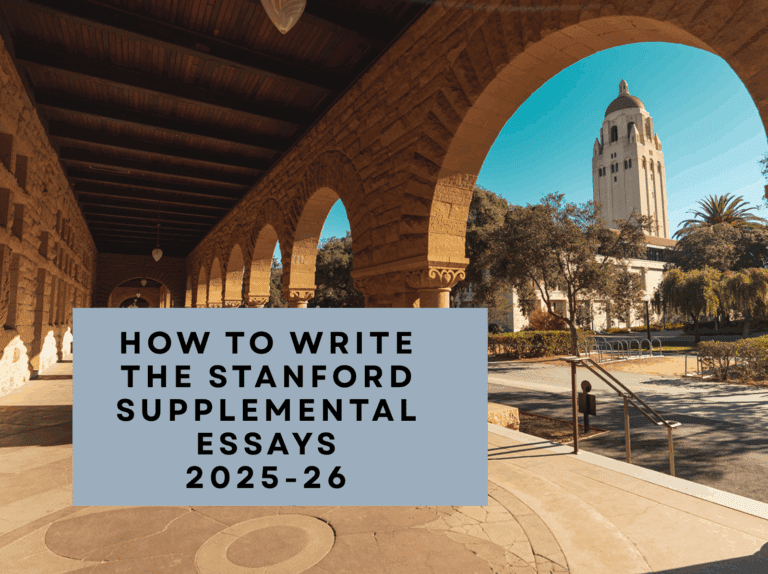
How to Categorize Colleges for your List
When building your college list, you’ll often hear the advice to include a mix of reach, target, and safety schools. But what’s less commonly explained is how to determine which schools fall into each category—for you. That’s exactly what we’re going to break down in this blog.
It’s important to understand that college categorization is highly personalized. The same school might be a target for one student and a reach for another, depending on academic credentials, extracurriculars, and overall fit. Except for a few ultra-competitive institutions that are reachable for nearly everyone, most schools fall into different categories based on your unique profile.
Reach Colleges
There are two main reasons a college might fall into your “reach” category:
-
Very-Low Acceptance Rates
Some schools are considered reaches for everyone, regardless of academic prowess, simply because of how competitive they are. Many Ivy League schools, Stanford, MIT, and similar institutions have acceptance rates below 5%. That means even outstanding applicants face long odds.These are often called super-reach schools. While it’s not impossible to get in—thousands of students do each year—you should assume the odds are not in your favor due to sheer volume and selectivity.
-
Your Academic Profile Is Below the Average
A college becomes a reach for you personally when your academic indicators—such as GPA, standardized test scores, or class rank—fall below the school’s average admitted student. -
Take the University of Chicago, for example: the vast majority of accepted students submit SAT scores of 1500+ or ACT scores between 33 and 36, and 64% have a GPA over 4.0. If your SAT is 1450 and your GPA is 3.75, your chances are significantly lower than average, making UChicago a reach school for you.
Important note: Reach does not mean out of reach. Many students do get accepted to their reach schools, especially when they use smart application strategies. One effective approach is applying Early Decision (ED) to your top-choice school. ED applications often have higher acceptance rates because they demonstrate commitment, which colleges value when trying to predict yield (who will actually enroll).
What You Need to Know About Vassar College | Ivy Central
Target Colleges
A target school is one where you match well with the academic profile of the school’s most recently admitted class. You’re not guaranteed to get in, but your chances are significantly higher—usually between 25% and 70%.
To identify target schools, compare your:
-
GPA
-
Standardized test scores
-
Coursework rigor
-
Extracurriculars
…to the data colleges share each year. Sites like CollegeData.com and Common Data Set reports are useful tools for gathering this information.
Since “target” covers a wide probability range, it’s smart to select a few where you’re right in the middle of the admitted range and a couple where you’re closer to the top. This variation gives you a better chance of having multiple options come spring.
Safety Colleges
Every student—yes, every student—should include at least one or two safety schools on their list. These are schools where your academic profile is well above the average admitted student and where acceptance rates are generally 70% or higher. While no admission is ever guaranteed, you should feel confident about getting in.
Why are safeties important? Because even the best-laid plans can go awry. Maybe your test scores dip, or there’s a surge in applications. A safety school ensures you have a solid backup and helps reduce stress during results season.
Crucially, your safety school should be a place you’d be happy to attend. Too many students overlook this and end up disappointed if that’s their only option. Think of it this way: a true safety is not just easy to get into—it’s a school that also fits your academic, social, and financial needs.
Strategizing Your College List
Most students can’t apply to 30+ colleges (nor should they). If your high school limits you to 12 applications—common in many international schools—a good starting mix might be:
-
2 safety schools
-
6 target schools
-
4 reach schools
This structure balances aspiration and realism, while also giving you flexibility as you receive early results. Your list doesn’t need to be set in stone—you can tweak it along the way.
Bonus Tip: The University of California (UC) System
With one application, you can apply to multiple UC campuses. This makes it easy to include a spread:
-
Reach: Berkeley, UCLA
-
Target: Santa Barbara, Irvine
-
Safety: Riverside, Merced
Just remember: only apply to schools you’re genuinely interested in. Your safety school might be the one to welcome you with open arms—make sure it’s a place where you can still thrive.
What You Need to Know About Vassar College | Ivy Central
Final Thoughts
Applying to college is part planning, part ambition, and part flexibility. A balanced college list—carefully crafted with reach, target, and safety schools—is your safety net and your launchpad. Don’t skip this step. Students often find themselves disappointed come decision season.
Make sure your list reflects your academic profile, goals, and personality—not someone else’s rankings or opinions. And most importantly: believe in your potential, but prepare wisely.
Working with study abroad consultants, overseas education consultants, or, as more commonly known, college counselors, can help you plan ahead and make those high school years count. Ivy Central offers exceptional focus to help you prepare for college admissions throughout the high school years. Start today!








